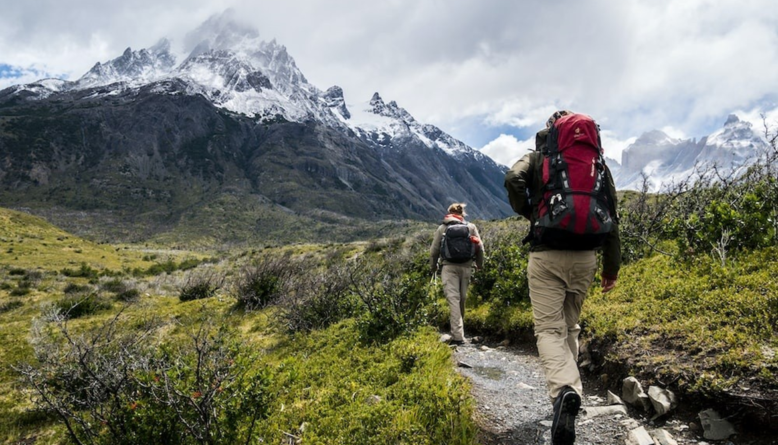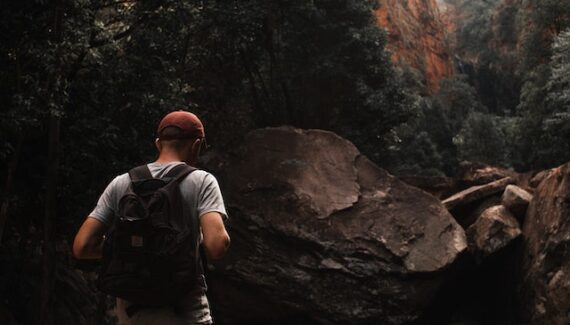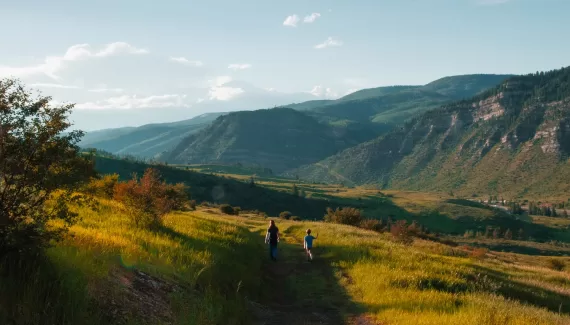As an avid hiker, I’ve found that solo hiking can be a rewarding and empowering experience. However, hiking alone comes with its own set of challenges and safety considerations that are important to keep in mind. In this article, I’ll share with you some essential tips to ensure your safety on the trail when hiking alone.Introduction to Solo Hiking
Solo hiking is the act of hiking alone, without a partner or group. It can be a great way to enjoy nature, gain independence, and challenge oneself physically and mentally. However, it is not without its risks and challenges. Before embarking on a solo hiking trip, it’s important to understand the benefits and challenges of hiking alone.
Benefits and Challenges of Solo Hiking
One of the biggest benefits of solo hiking is the sense of freedom and independence it provides. You can hike at your own pace, choose your own route, and make your own decisions without having to compromise with a partner or group. Solo hiking can also be a great way to connect with nature and yourself, as it allows you to fully immerse yourself in the natural world without any distractions.
However, solo hiking also comes with some challenges. One of the biggest challenges is the lack of support and assistance that a partner or group can provide. If you get lost, injured, or encounter any other problems on the trail, you will have to rely on yourself to solve the issue. Additionally, solo hiking can be more mentally challenging than hiking with a partner or group, as you don’t have anyone to share the experience with or distract you from any negative thoughts.
Safety Considerations When Hiking Alone
Safety should always be the top priority when hiking, and this is especially true when hiking alone. Here are some essential safety considerations to keep in mind:
Let someone know your plans
Before embarking on a solo hiking trip, make sure to let someone know your plans. Share your intended route, estimated time of arrival, and expected time of return with a trusted friend or family member. This way, if you don’t return as expected, someone will know to look for you.
Bring appropriate safety equipment
When hiking alone, it’s important to bring appropriate safety equipment. This includes a first aid kit, map and compass, whistle, flashlight or headlamp, and extra food and water. You should also consider bringing a satellite phone or personal locator beacon in case of emergencies.
Be aware of your surroundings
When hiking alone, it’s important to be aware of your surroundings at all times. Stay on marked trails, and be aware of any potential hazards or dangerous wildlife in the area. If you encounter wildlife, keep a safe distance and make noise to alert them of your presence.
Trust your instincts
If something doesn’t feel right, trust your instincts and err on the side of caution. This might mean turning back if you’re unsure of the trail, or avoiding a certain area if it seems unsafe. Remember, it’s better to be safe than sorry.
Essential Hiking Safety Equipment for Solo Hikers
As mentioned earlier, bringing appropriate safety equipment is essential when hiking alone. Here are some items you should always have in your pack:
First aid kit
A first aid kit should include basic supplies such as bandages, gauze, antiseptic wipes, and pain relievers. It’s also a good idea to include any personal medications or supplies you might need.
Map and compass
Even if you’re hiking on a well-marked trail, it’s important to have a map and compass with you in case you need to navigate off-trail. Make sure you know how to use them before you head out.
Whistle
A whistle is an essential piece of safety equipment, as it can help you signal for help if you get lost or injured. Make sure to keep it easily accessible, either on your pack or around your neck.
Flashlight or headlamp
Even if you don’t plan on hiking after dark, it’s important to have a flashlight or headlamp with you in case your hike takes longer than expected. Make sure to bring extra batteries as well.
Extra food and water
Always bring extra food and water in case your hike takes longer than expected, or in case of emergencies.
Planning and Preparation for Solo Hiking Trips
Proper planning and preparation are essential when hiking alone. Here are some tips to help you plan and prepare for a solo hiking trip:
Research your route
Before heading out on a solo hiking trip, make sure to research your route thoroughly. This includes looking up trail conditions, weather forecasts, and any potential hazards or dangers in the area.
Leave an itinerary
As mentioned earlier, make sure to let someone know your plans before you head out. This includes leaving an itinerary with a trusted friend or family member, including your intended route, estimated time of arrival, and expected time of return.
Check in regularly
Make sure to check in with your emergency contact regularly to let them know you’re safe and on track. This can be as
simple as sending a quick text message or making a phone call.
Know your limits
When planning a solo hiking trip, make sure to know your limits and plan your route accordingly. Don’t attempt a trail that is beyond your skill level or physical ability.
Choosing Safe and Suitable Hiking Trails
Choosing a safe and suitable hiking trail is essential when hiking alone. Here are some things to consider when choosing a trail:
Difficulty level
Make sure to choose a trail that is within your skill level and physical ability. Don’t attempt a trail that is too difficult or beyond your capabilities.
Trail conditions
Research trail conditions before heading out, and avoid trails that are known to be dangerous or have a high risk of accidents.
Cell service
Choose a trail that has good cell service, or bring a satellite phone or personal locator beacon in case of emergencies.
Crowds
Consider hiking on a trail that is popular and well-traveled, as this can provide an added sense of safety and security.
Tips for Hiking Alone as a Woman
Hiking alone as a woman can be an empowering and rewarding experience, but it also comes with its own set of challenges and safety considerations. Here are some tips to help you hike alone as a woman:
Dress appropriately
Make sure to dress appropriately for the weather and trail conditions. Wear comfortable and functional clothing that allows for a full range of motion.
Avoid hiking alone at night
If possible, avoid hiking alone at night. Stick to daylight hours, and make sure to plan your route accordingly.
Trust your instincts
As mentioned earlier, trust your instincts and err on the side of caution. If something doesn’t feel right, don’t hesitate to turn back or seek help.
Be aware of your surroundings
Be aware of your surroundings at all times, and keep an eye out for any potential hazards or dangerous wildlife in the area.
Why You Should Avoid Hiking with Headphones
Hiking with headphones can be tempting, but it’s important to avoid this practice when hiking alone. Here’s why:
It can distract you from your surroundings
When hiking alone, it’s important to be aware of your surroundings at all times. Hiking with headphones can distract you from potential hazards or dangerous wildlife in the area.
It can make it harder to hear approaching hikers
If you’re hiking with headphones, you might not be able to hear approaching hikers or other trail users. This can be dangerous, especially on narrow or crowded trails.
It can make it harder to hear emergency signals
If you need to signal for help in an emergency, it’s important to be able to hear any potential rescuers. Hiking with
headphones can make it harder to hear emergency signals.
Solo Backpacking: What You Need to Know
Solo backpacking is a more challenging and demanding form of solo hiking, but it can also be a rewarding and life- changing experience. Here’s what you need to know if you’re considering solo backpacking:
Plan and prepare carefully
Proper planning and preparation are even more important when backpacking alone. Make sure to research your route thoroughly, pack appropriately, and leave an itinerary with a trusted friend or family member.
Bring appropriate gear
Backpacking alone requires more gear than day hiking, so make sure to bring appropriate gear such as a tent, sleeping bag, cooking stove, and food and water.
Be aware of the added risks
Backpacking alone comes with added risks such as being farther away from civilization and having to carry more weight. Make sure to be aware of these risks and plan accordingly.
Safe Places to Hike Alone Near You
If you’re looking for safe places to hike alone near you, here are some resources to help you find them:
Local hiking groups
Joining a local hiking group can be a great way to meet other hikers and learn about safe and suitable hiking trails in your area.
National Parks
National Parks are a great resource for safe and well-marked hiking trails. Make sure to research the trail conditions and potential hazards before heading out.
Hiking apps
There are a number of hiking apps available that can help you find safe and suitable hiking trails near you. Some popular options include AllTrails, Hiking Project, and Gaia GPS.
Related Article: Exploring the Hidden Gems of Hiking Destinations: Off the Beaten Path
Solo Hiking Courses and Resources
If you’re new to solo hiking or want to learn more about it, there are a number of resources and courses available to help you get started. Here are some options:
REI
REI offers a number of courses and workshops on solo hiking and backpacking, as well as gear rental and advice.
National Outdoor Leadership School (NOLS)
NOLS offers a variety of courses and expeditions focused on outdoor leadership and wilderness skills, including solo backpacking.
Online resources
There are a number of online resources available on solo hiking and backpacking, including blogs, forums, and YouTube videos.
Conclusion
Solo hiking can be a rewarding and empowering experience, but it’s important to take safety considerations seriously. By following these essential tips and being prepared, you can enjoy all the benefits of solo hiking while staying safe on the trail. So grab your pack and hit the trail – adventure awaits!
Related Article: The Ultimate Checklist for Novice Hikers: Step Up Your Game



No Responses Yet